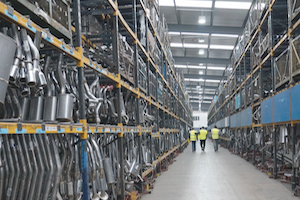
This is the time of year to quell any unrest and make sure your customers are staying loyal, says John Genge.
At this time of year any good business person will be considering the coming year and what might face their company. Budgets, plans, forecasts, whatever you call them if you don’t do them, you’re in big trouble.
Last year I wrote about budget preparation for 2012. I’ve just re-read it and the content is still as relevant today as it was last year so I urge you to pull out last year’s CAT and read it again (you’ll also find it online at catmag.co.uk now).
This year, however, I want to concentrate on a specific area and that is your sales budget. This is not a difficult area, but it does need to be done thoroughly. Many managers that I have worked with prepare a sales budget like this:
Current year to date sales value + a forecast for the last remaining months + inflation prediction for next year = Next years budget.
Some might add a market growth or decline factor and even make adjustments for new customers gained and old ones lost – this process is called incremental budgeting. It’s OK, but I don’t think it’s scientific or searching enough.
Zero base budget method
I urge you to use the zero base budget method. It takes a little longer, and is a little more complex, but if you do it properly it will not only give you a better and more accurate budget, it will also identify areas where you have performed poorly and what you need to do to improve.
Each of you will have a sales ledger and some systems will have detailed sales history by customer. Whatever you’ve got, get out a report to cover the last 12 months and identify sales levels customer by customer. Do the same for the previous 12 months and straight away you can identify:
-Â Â Â Â Â Â Â Â Â Â Â Your biggest customers
-Â Â Â Â Â Â Â Â Â Â Â New ones that you have gained
-Â Â Â Â Â Â Â Â Â Â Â Those that you have lost
-Â Â Â Â Â Â Â Â Â Â Â Those with whom you have significantly increased sales
-Â Â Â Â Â Â Â Â Â Â Â Those with whom you have significantly lost sales
the devil is in the detail
There are some that reckon they know this information off the top of their head, but I reject that. The devil is in the detail, and very often memory gives a distorted view of reality. Please, do the exercise and highlight the major changes both good and bad.
Then you need to ask some questions. Why did you gain that business? Is the growth just short term or will it be long term? Why did that customer defect from you? What else can you sell that customer? And so on. You must ask searching questions and be prepared to be self-critical. Don’t kid yourself, don’t blame others and don’t just curse the economy. There are still people out there making money and growing their business.
set targets for each client
For the top 80 percent of customers, at least, look at their business, their buying profile and their likely supplier needs. From that information work out a detailed plan of what they should reasonably expect to buy from you. Then set out a strategy to determine what actions you need to take to
achieve this. Do you visit them, offer them better terms or walk away? You will need to do something dynamic, otherwise little will change for the better. You might need to ask them what they like or dislike about dealing with you. Don’t be frightened. Of course they will tell you that you’re too expensive, they always do, but there will be other reasons why they choose to come to you or not.
For the remainder, don’t just ignore them. I would still ask, why are they peripheral customers? Why do they buy so little? Is it because of what we are, what we do or in spiteof all of that?
There will always be a reason. You will never get all of the business because, frankly, other good operators will be out there. If you take this approach, you will know the reasons you are succeeding or failing, however, and be able to make decisions on how to overcome the failures.











Go to comments